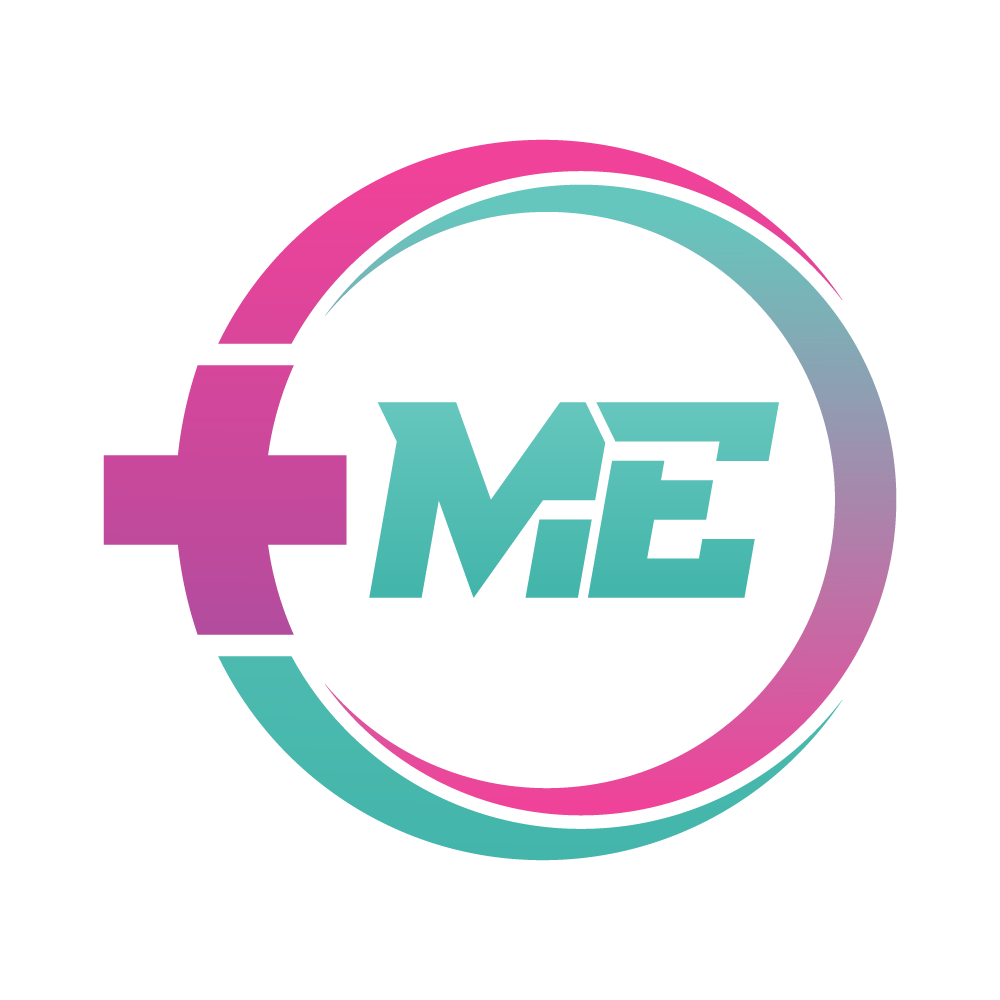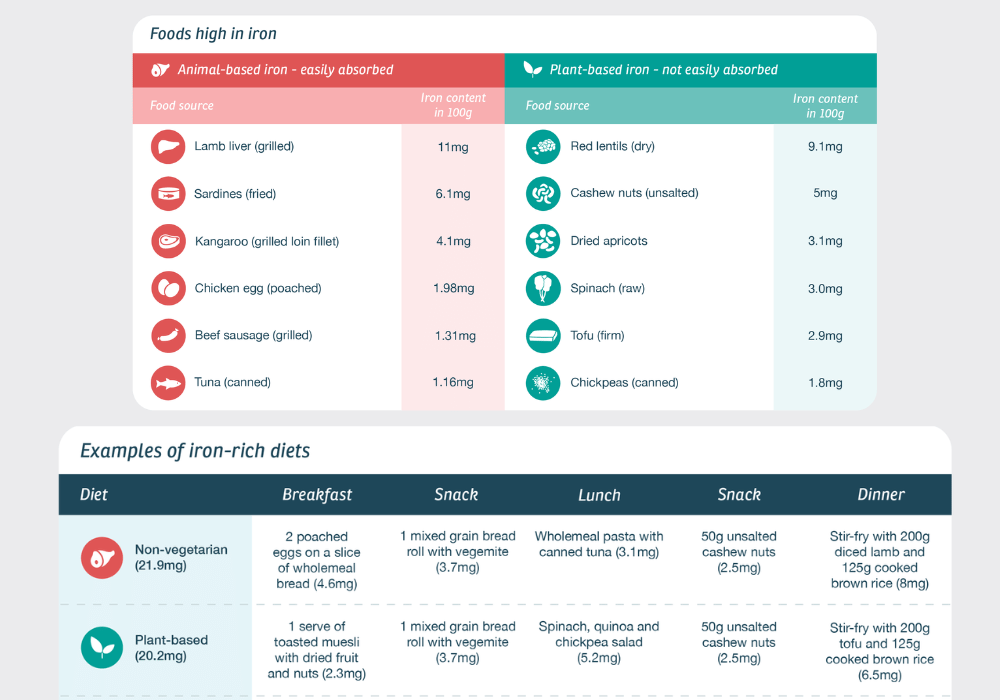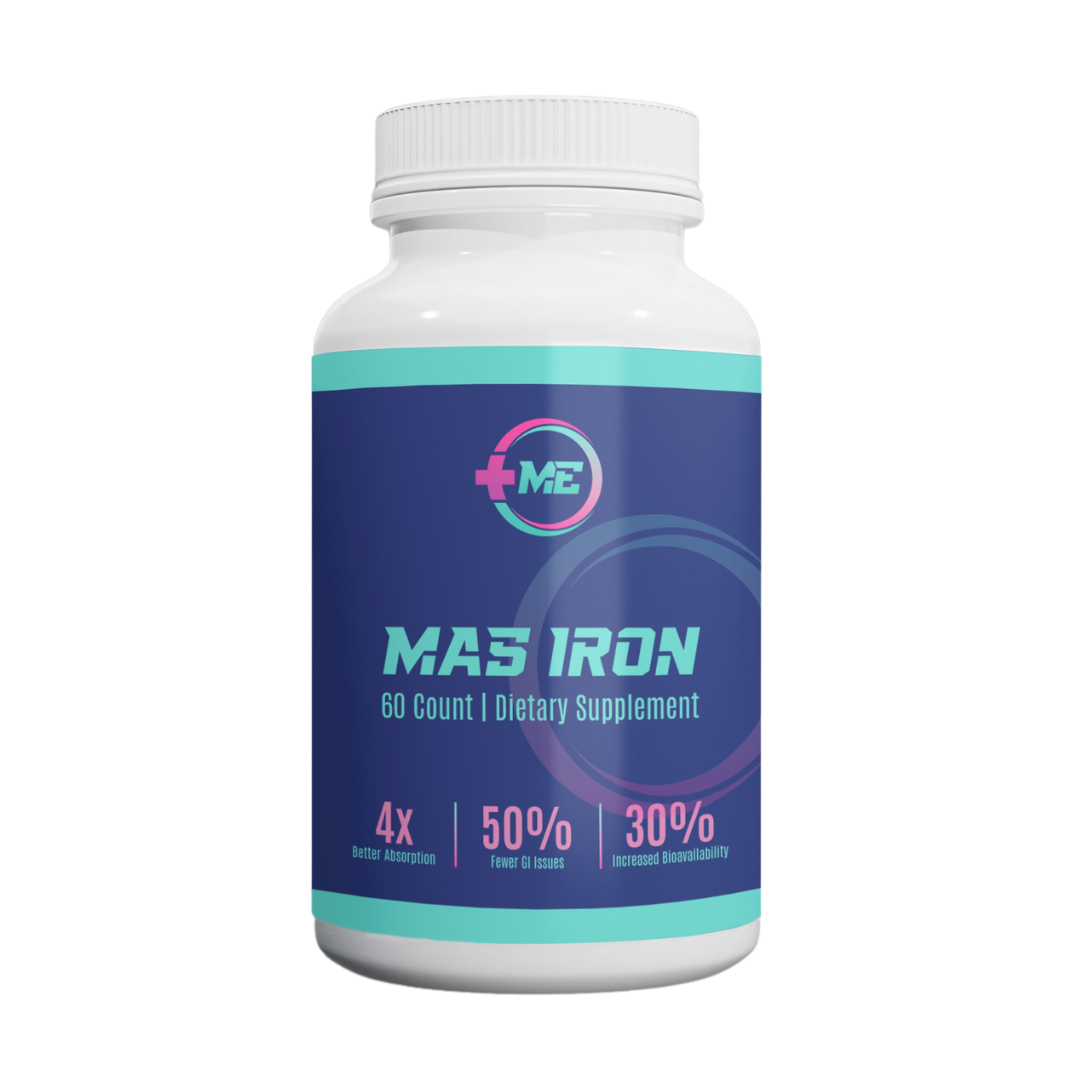A few days ago I wrote a piece on why runners are 2.5x more likely to have an iron deficiency compared to the normal population.
In that article, I also discussed why iron is so difficult for us to absorb naturally.
If you recall, research shows that we only absorb 14% to 18% of iron from animal products and as low as 5% to 12% from plant-based iron sources.
So, today I wanted to share some secrets I’ve learned throughout the years that can help you dramatically increase those numbers. We’ll cover…
- The most iron-rich foods you can eat and what foods help and hinder iron absorption.
- What to look for if you do want to supplement
- How timing when you take your iron can dramatically increase absorption
Iron-Rich Foods
The best source of iron from foods are going to come from meat, poultry and fish products.
That’s because this form of iron (called heme iron) is generally better absorbed by the body compared to non-heme iron (iron from plant sources).
The best sources are going to be…
- Liver (lamb is best, but cow is good too)
- Lean sources of meat, such as chicken and lean beef
- Oysters
- Egg Yolk
- Tuna
The best non-heme iron sources are going to be…
- Red lentils
- Dark, leafy vegetables (spinach, kale, etc.)
- Cashews
- Chickpeas
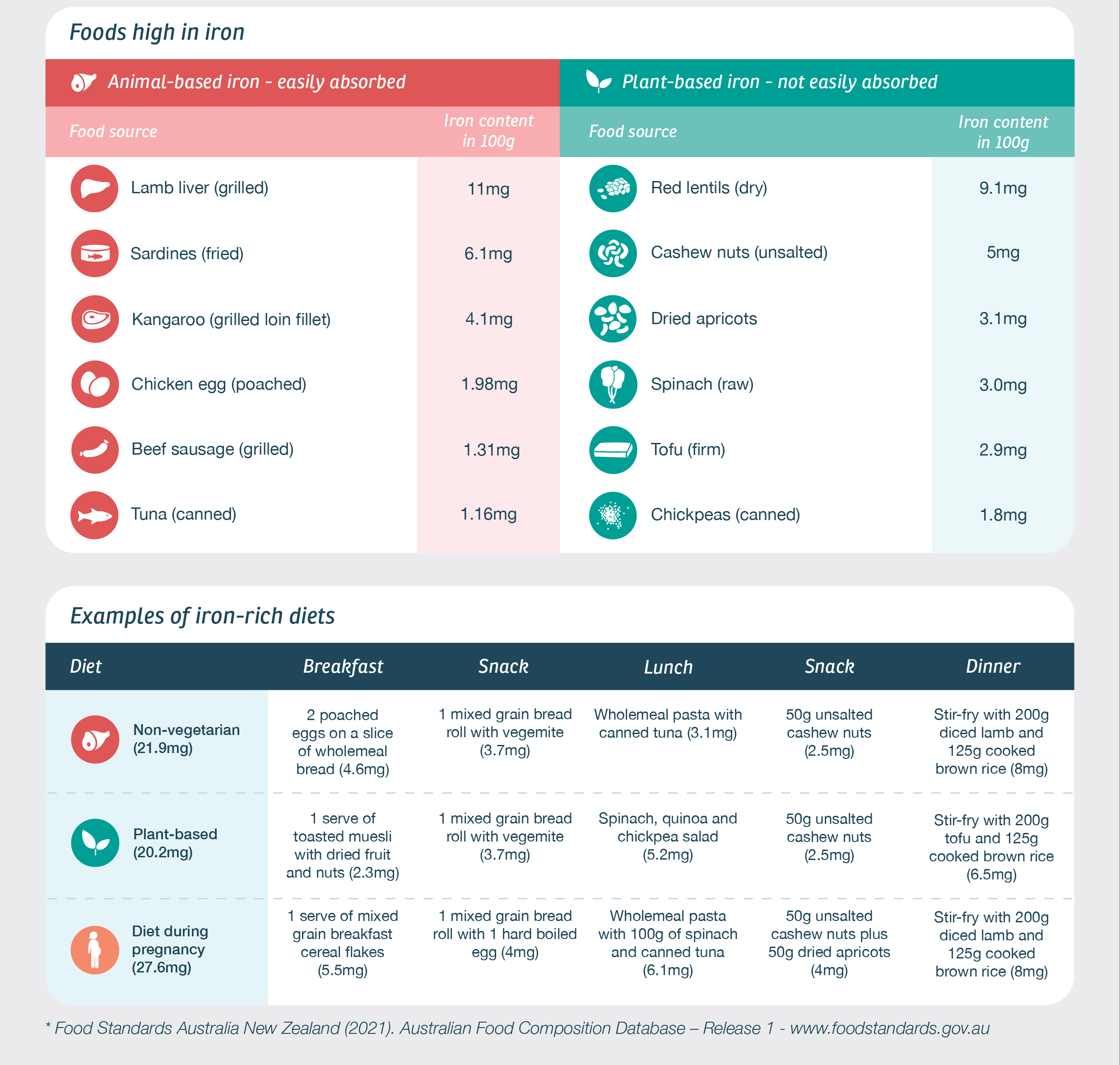
As you might have guessed, vegans and vegetarians need to pay more attention to the amount of iron they eat.
This was confirmed by a 2018 research review by Haider et al. which found vegetarians are more likely to have low iron stores than non-vegetarians.
It’s generally recommended that vegetarians multiply their recommended iron intake by 1.8 to compensate for the reduced absorption of non-heme iron.
What about cast iron cookware?
One method you might have heard about to increase the amount of iron in your diet is cooking your food using cast iron cookware.
Absorbing iron from your pots and pans sounds completely crazy—is there any truth to this, or is it just a running old-wives’ tale?
This exact question was studied in a 1991 article in the Journal of Food Science by Y.J. Cheng and H.C. Brittin.
They found that there was a slight increase in the amount of iron found in foods cooked in cast iron cookware compared to glass, but the total amount as negligible (about 2mg for a 100g dish).
Iron Inhibiting Foods
What makes absorbing iron even more difficult is that many common foods we eat together interfere with the absorption of iron.
Here are some of the more common…
Foods containing phytate
Phytate, or phytic acid, is found in foods like whole grains, cereals, soy, nuts, and legumes. Even a small amount of phytate can significantly decrease iron absorption.
Calcium-rich foods
While calcium is an essential mineral for bone health, some evidence shows that it hinders the absorption of heme and non-heme iron.
Foods containing polyphenols
Polyphenols are most commonly found in tea, coffee, and wine. Coffee especially has been shown to inhibit the absorption of non-heme iron.
It’s a little more work, but simply planning your meals so you include more iron-rich foods and limit iron-inhibiting foods at the same time can have a big effect on iron absorption.
This is definitely a situation where the more you understand, the more you’re empowered and can make better-informed plans when it comes to increasing your iron levels.
The Secret to Timing Your Iron Intake
There’s a little secret unique to runners when it comes to eating or taking an iron supplement.
Timing matters!
You see, there’s an iron-regulatory hormone called hepcidin that steadily increases the longer you run and for about 2-3 hours after you finish.
Hepcidin has been shown to reduce iron absorption by up to 36%!
This means if you’re going to take an iron supplement or have iron-rich meals, you should do so before training (if you run in the afternoons) or wait at least 3 hours after training.
What to Look for in an Iron Supplement
Trying to get the iron you need through whole foods and meal timing is definitely something we all aspire to.
But, I am personally of the belief that supplements were made for just this purpose: to help us “supplement” when getting the nutrients we need through diet alone is difficult.
So, if you do want to supplement, here is what you should look for…
1. Look for iron in the form of iron bisglycinate
Chelated iron, such as the iron bisglycinate, is iron bound to two molecules of the amino acid glycine.
This form improves absorption because the two molecules of glycine block dietary factors like fiber from interfering with absorption.
The bisglycinate form is also more soluble, which translates to better absorption, which in turn decreases gastrointestinal side effects like constipation and stomach upset.
2. Take with other vitamins/minerals know to aid absorption
Another “hack” to increasing iron absorption is to always take your iron with ingredients that have been shown to increase bioavailability.
These include the “normal” suggestions, such as vitamin c, b6 and b12.
But, you can also add ingredients like Alpha GPC, which has been shown to increase absorption 4 x more than taking iron alone; or BioPerine, which increases bioavailability by 40%.
That's Why We Created MAS Iron
MAS Iron uses genuine iron bisglycinate with the supporting nutrients that research shows optimize absorption and utilization.
Our formula combines iron bisglycinate with buffered vitamin C, active folate, AlphaGPC and Bioperine B12 in precise ratios shown to maximize iron uptake.
It’s the only iron supplement specifically formulated for endurance athletes that addresses both absorption optimization and red blood cell formation support.
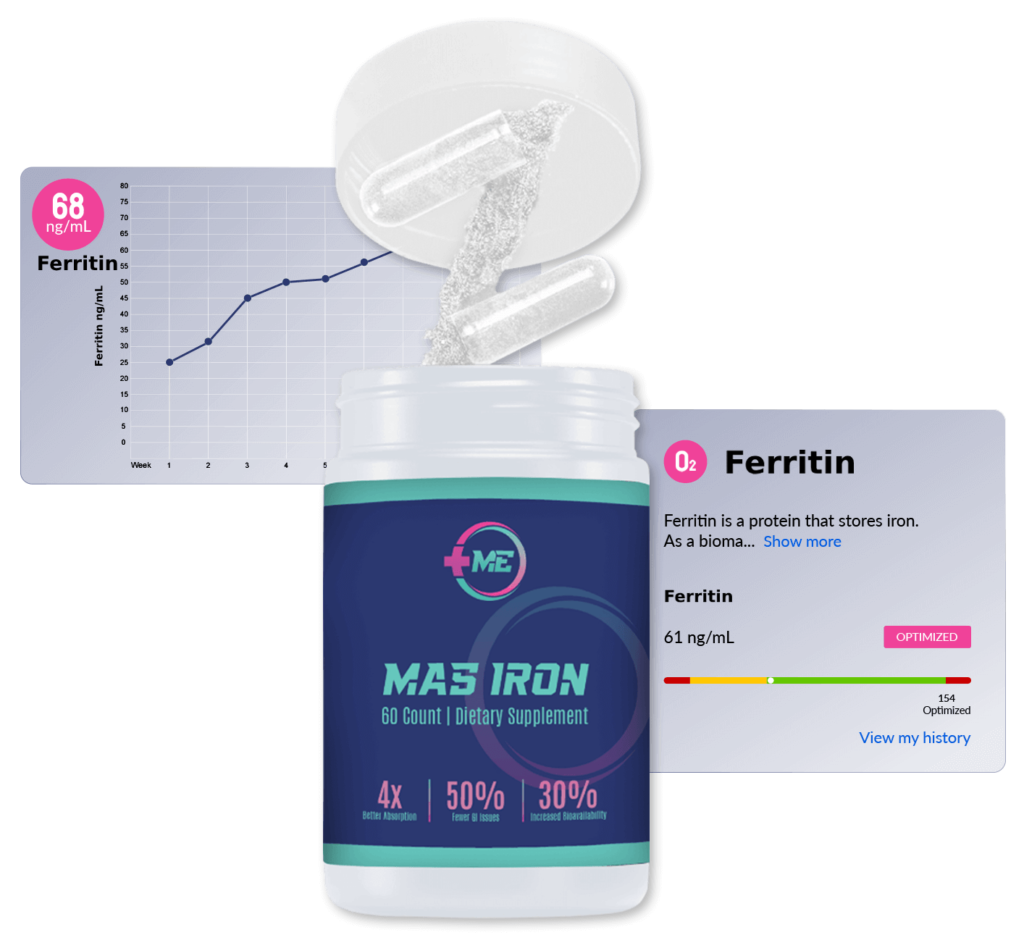
So Why Is MAS IRON Better?
MAS Iron combines the most efficiently absorbed form elemental iron with clinically proven ingredients to aid in absorption.
Each ingredient tested alone with iron demonstrated the ability to enhance absorption by 30% to 400%. This is why MAS Iron performs like no other iron product on the market.
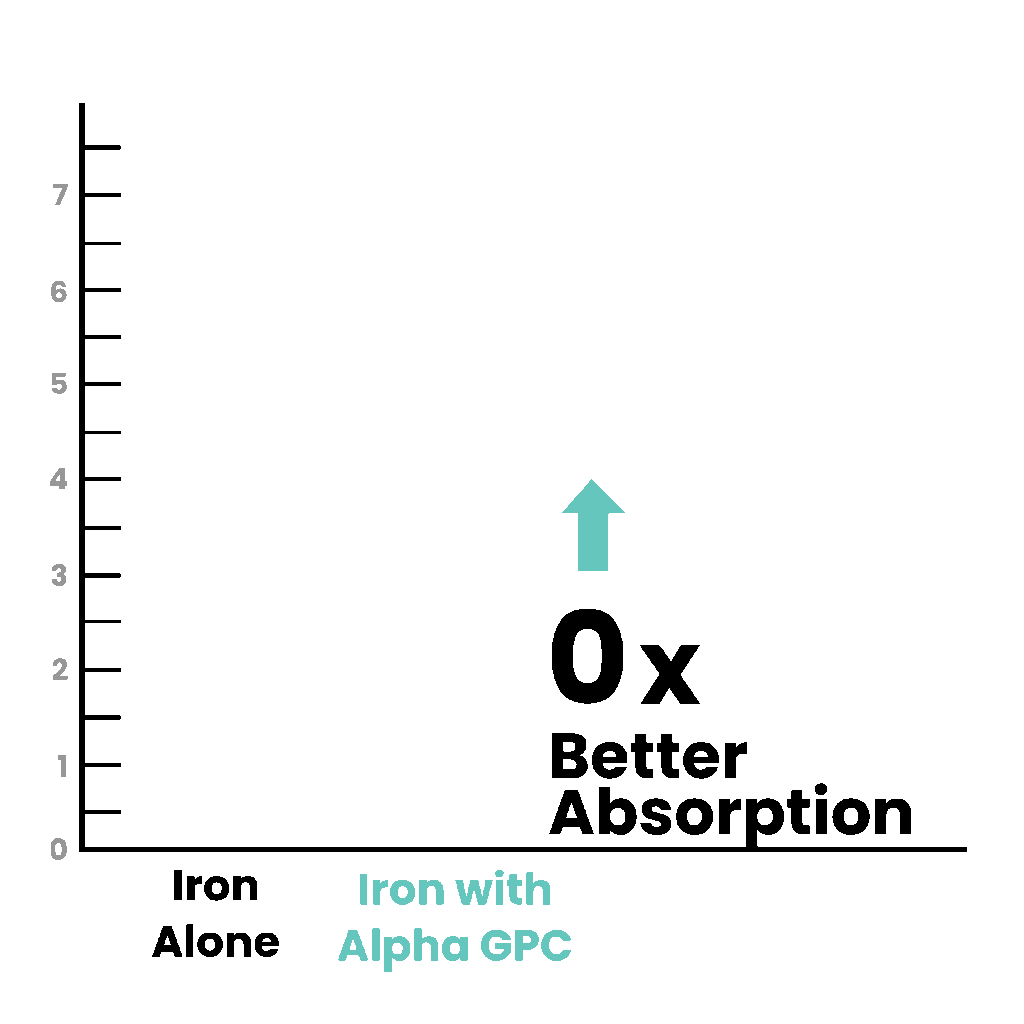
4x Better Absorption
The addition of Alpha GPC when taking an iron supplement has been shown to increase absorption up to four times compared with taking iron alone.
Alpha GPC has also been shown to increase the absorption of nonheme iron from food sources.
30% Increase in Bioavailability
Clinical research on BioPerine has made it clear that black pepper increases the uptake of iron supplements as much as 30%.
Researchers believe this is because BioPerine enhances the bioavailability of iron supplements.
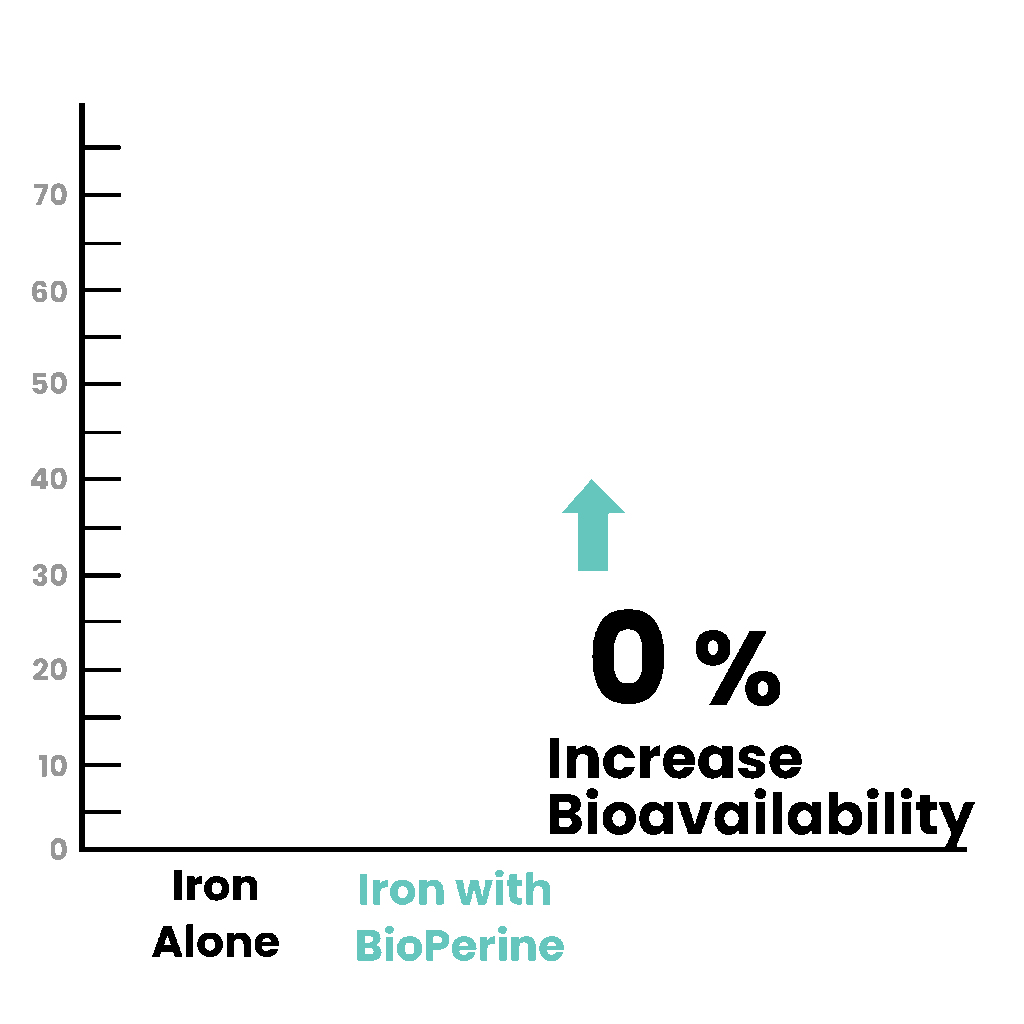
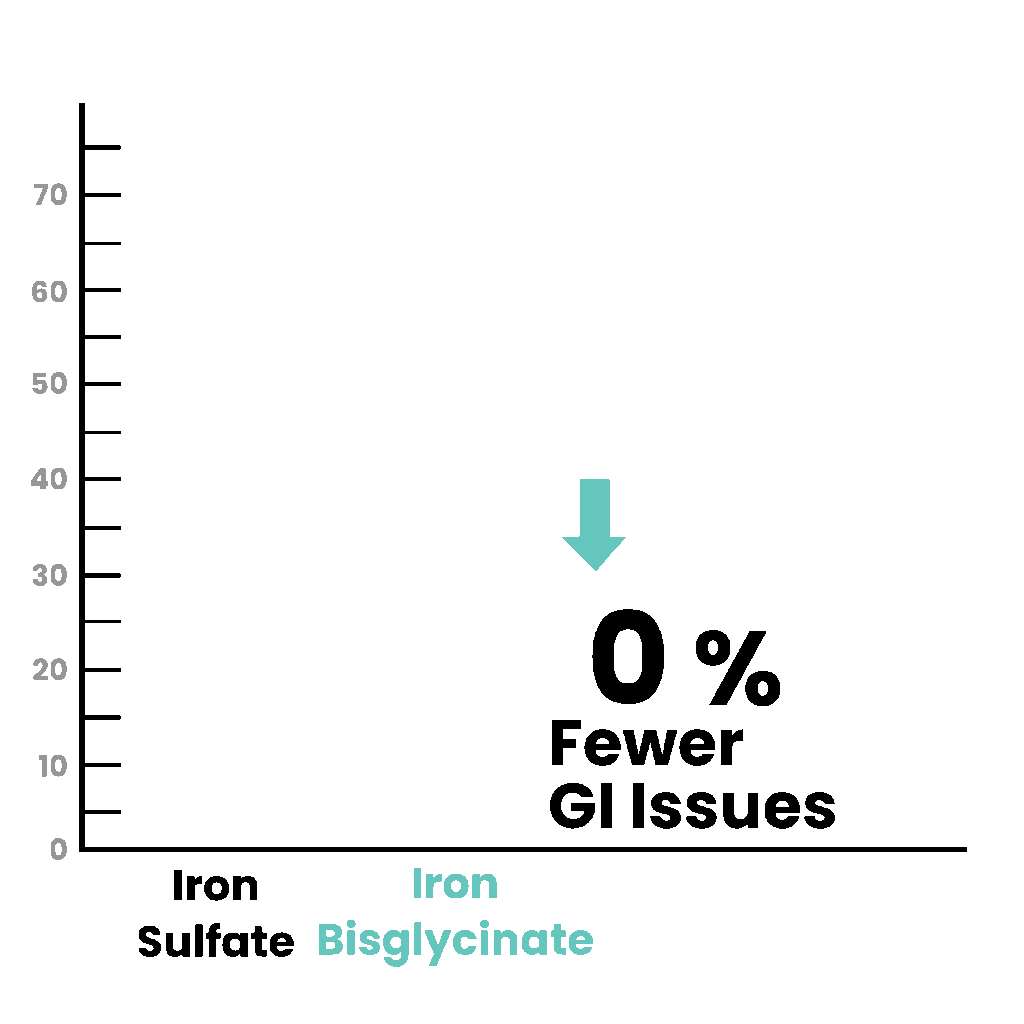
50% Fewer GI Side Effects
Not only is iron bisglycinate better absorbed than all other forms of iron, but research has shown using iron bisglycinate resulted in 50-percent fewer GI side effects compared to the same dose of iron sulfate.

The Lab Work & Athletes Like You Speak for The Results
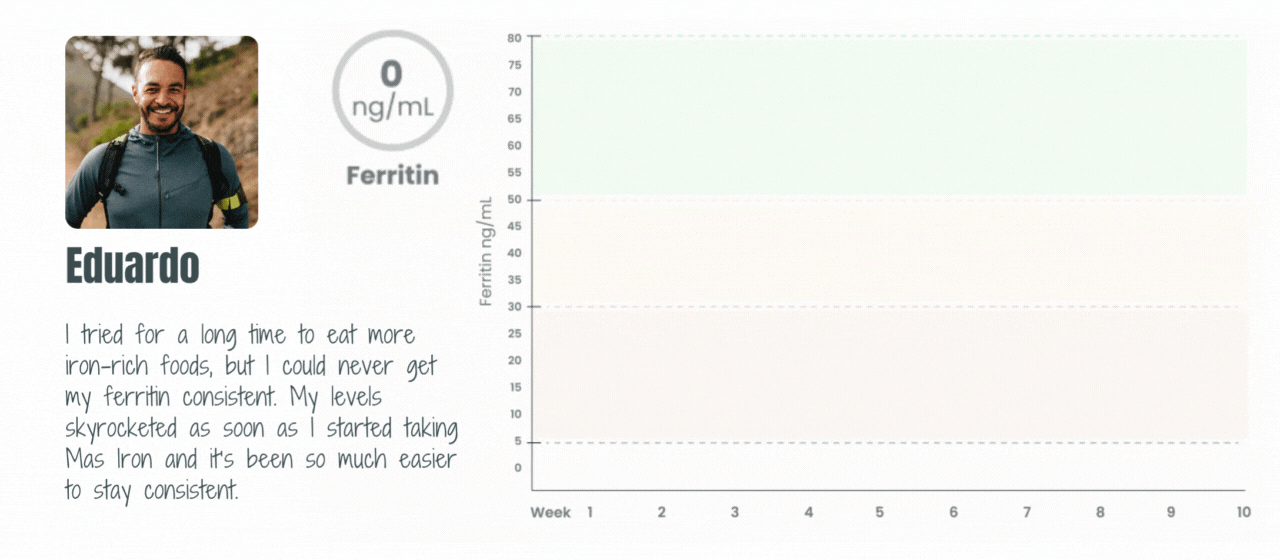
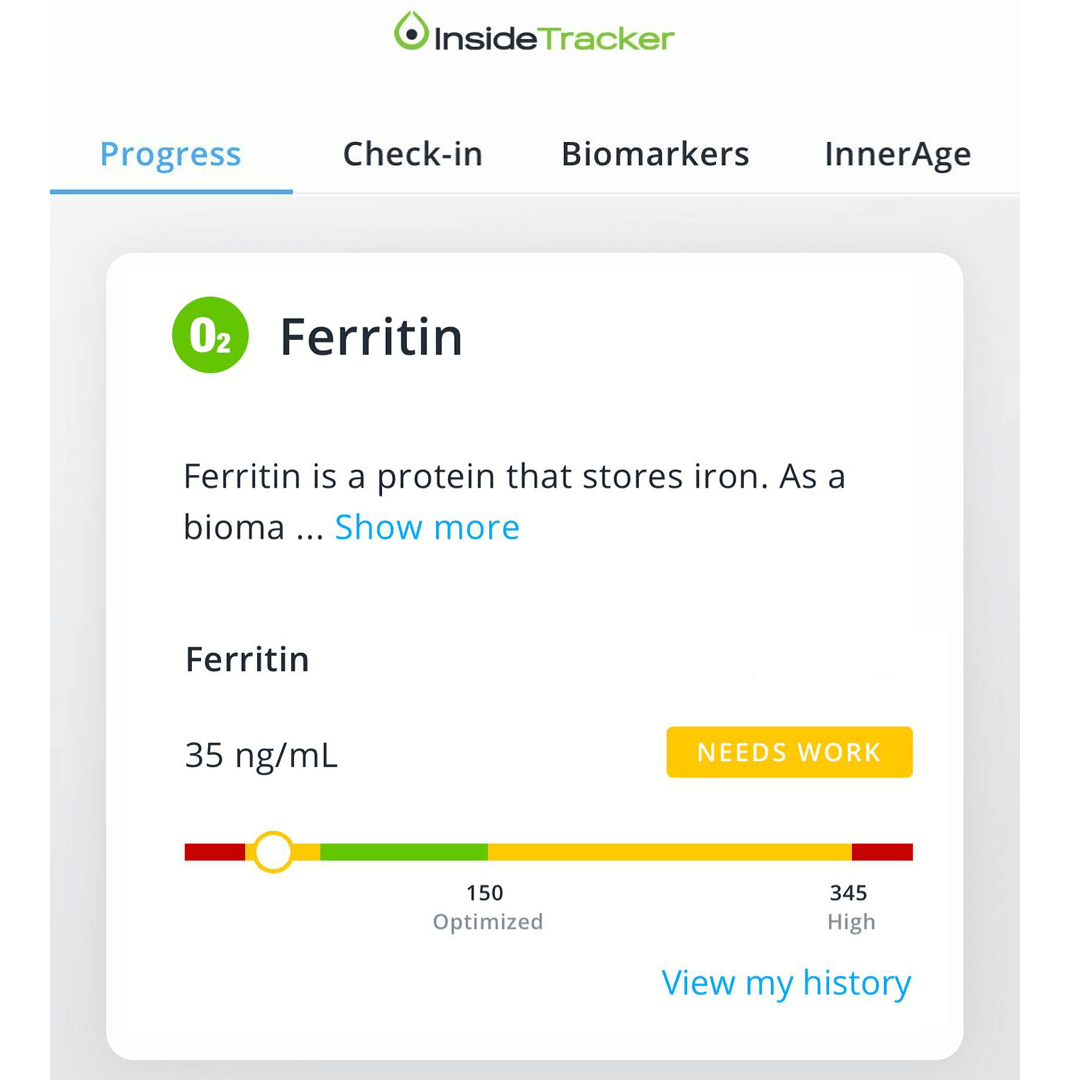
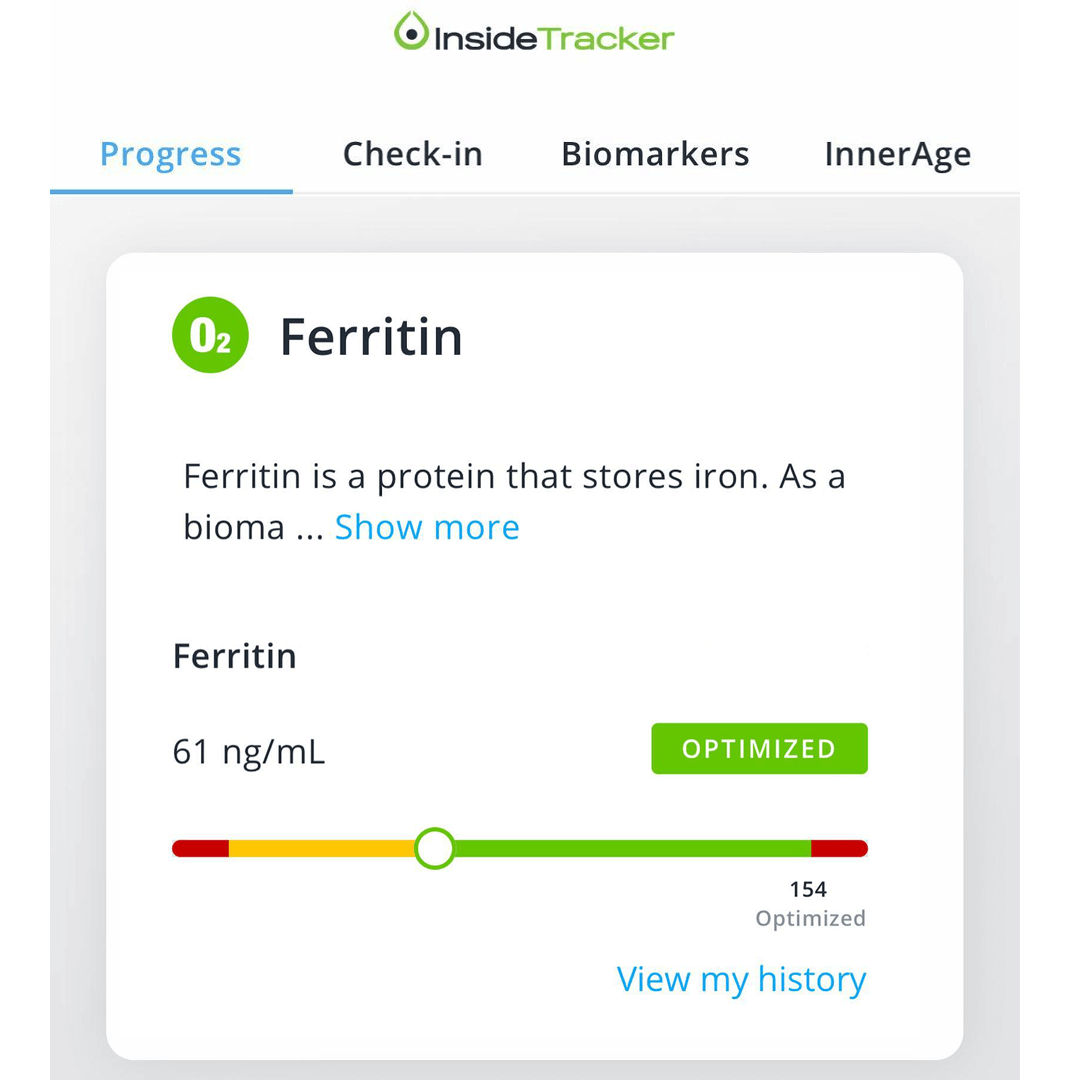
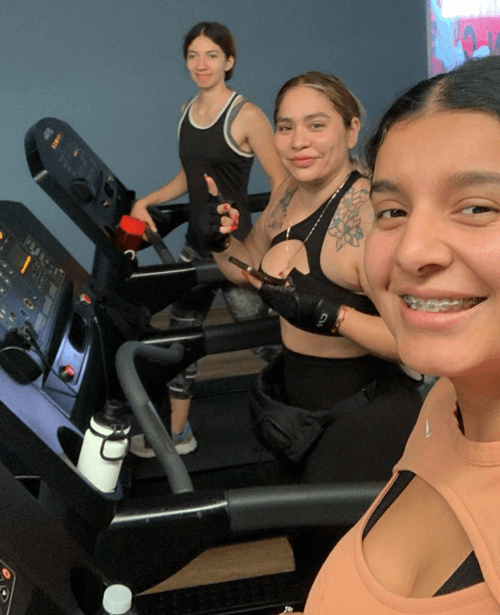
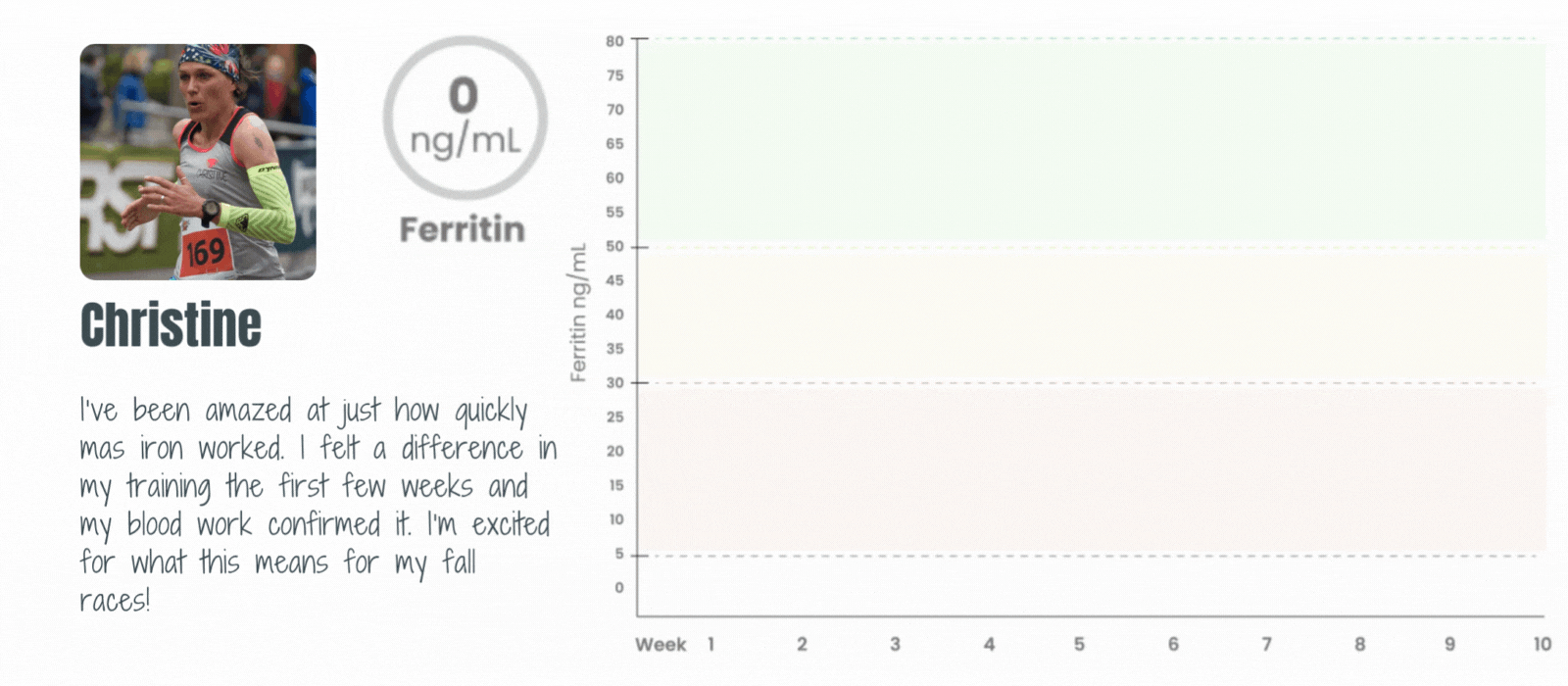
Backed By Our No Return Necessary Money-Back Guarantee
Try MAS Iron and if you don’t see your iron levels increase after 60 days or you’re unhappy for any reason, just let us know via email or phone and we’ll refund your money.
If you’ve been suffering from low iron this is a game-changer that will finally help you get your iron levels where they need to be!
